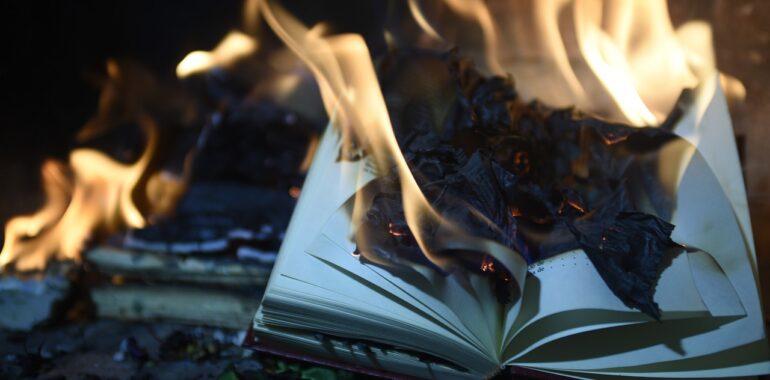Writers Who Burned Their Works

Writers Who Burned Their Works
It may be a gross misconception, but from a literary perspective it seems somewhat misguided and even painful to ask many authors to burn unfinished works after their death. A prime example of such a mistake is the case of Franz Kafka, who obliged his literary attorney to destroy all unfinished works after his death. Fortunately for readers, the word given to the writer was broken, and the world saw the entire literary legacy of the great writer. Like Kafka, Vladimir Nabokov also willed to burn his unfinished works, but his wife and son could not carry out his will. There is no doubt that for readers any burnt work is a great loss, but if the will of the creator bequeathed the manuscript such a fate, then the execution should be given directly by the hand of its creator.
1. Nikolai Gogol
It is this writer who is in the first row, because only a baby does not know about the tragic fate of the second part of Dead Souls. The great Russian writer all his life was surrounded by a halo of mystery and devilish mysticism, but Gogol himself was hardly ready to give fire to his creation. But only until one fanatical priest convinced Gogol of the sinfulness of his work, which leads its creator to a complete loss of propriety. In a fit of inexplicable passion, Nikolai Gogol destroyed the rough record that contained the second part of Dead Souls. It can hardly be explained other than by demonic conduction. Unfortunately, two weeks after this event, the writer himself was also gone.
2. Gerard Manley Hopkins
The English poet Gerard Manley Hopkins was another creative individual whose religious views contrasted sharply with his literary experience. It all began when he stopped writing poetry for Lent, but later, as a Jesuit priest, in a fit of religious confusion, he not only renounced poetry but also burned a large number of his earlier works. Unfortunately, the reader never saw most of his writings, but as Umberto Eco said, a great poet should burn his early poems rather than try to publish them.
3. James Joyce
While many authors are subject to religious experiences that push them to destroy their works, there are a number of writers who are willing to take such a step solely because of their aesthetic convictions. James Joyce, for example, became so disillusioned with his autobiographical novel, The Hero Stephen, after 20 rejections that the only sensible use for him was to put it on fire. But at that moment, as if at the command of an invisible supreme power, the writer’s wife, Nora, appeared on the scene and, risking her health, extracted her husband’s manuscript from the flames. Later this draft was substantially revised, and the final version of the novel was called Portrait of the Artist in Youth.
4. Robert Lewis Stevenson
If James Joyce’s wife helped him save his work in the literal sense, Robert Lewis Stevenson’s wife helped her husband in the spiritual sense. In the early stages of creating a new work, Stevenson often enlisted the help of his wife, and she, in turn, believed that the draft of the short story The Strange Story of Dr. Jekyll and Mr. Hyde was written in the “wrong” style, that is, took an overly literal approach to an allegorical story in form and content.
Being sick and bedridden, Stevenson was horrified when his own hand threw the draft directly into the fire. He called his wife and asked her to bring him the ashes, all that survived the story. But while in Joyce’s case his idea partially survived on paper, Stevenson saved it completely in his head. Thanks in part to the stimulating effects of his medication, he recovered the manuscript in less than a week.
5. Otessa Moshfegh
We’ve already discussed the religious and aesthetic reasons for destroying written works, but have many writers burned their works for survival? There is at least one example. Otessa Moshfegh, having temporarily abandoned her life in Manhattan for solitude in an old cabin in Maine, was left without wood for her stove one cold night. To keep from dying of cold, she had to burn some of her work. Perhaps this is just an exaggeration, and it is unlikely the writer would have said goodbye to life, but it is certainly a rare case of an author burning manuscripts out of a sense of physical necessity. Fortunately, Otessa had enough time and inspiration to recreate the draft from which A Dark and Winding Road was born.